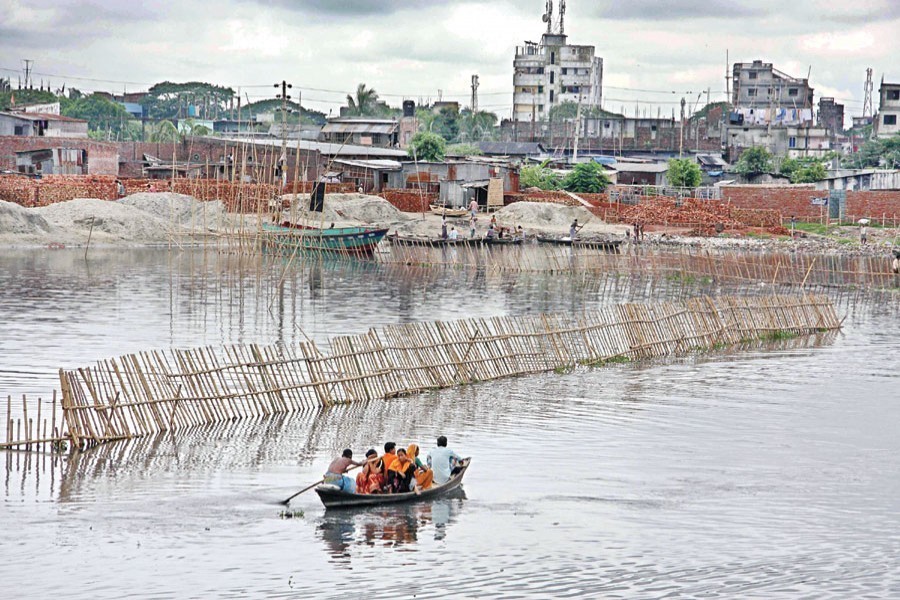
Published :
Updated :

With the river grabbing continuing unabated across the country, the lists of the persons and syndicates behind the abominable act are often prepared, though follow-up action would have been lacking. The task is reportedly beset with lack of coordination. The problem is, mere listing out of the people active behind grabbing rivers cannot stop the act. Apart from being faulty, the list-preparations may, in several cases, be biased too. Now that a fresh list of the river-encroachers has recently been made by the deputy commissioners' offices in 64 districts, both the affected people and river saving activists can accept it as being authentic.
State Minister for Shipping Khalid Mahmud Chowdhury told parliament on January 23 that a total of 49,558 grabbers have been on a swoop on the country's rivers. The list-making has been carried out by 64 district commissioners (DCs), the minister added. And, quite naturally, it is them who, the minister added, have been directed to launch drives against the river grabbers throughout the country. As expected in a situation witnessing a wholesale encroachment on rivers, the minister stressed the need for a crash programme against the grabbers. Quite expectedly, they will be identified in accordance with the lists prepared by the 64 DCs. As per the minister's disclosure, the list of the river grabbers has been made public on the website of the National River Protection Commission and all district portals. That the lists of grabbers in all the districts bear the potential for helping the authorities ferret out the culprits is hope-giving. The lists have already identified the highest number of grabbers in the district of Cumilla -- it comes to 5,906. The district is followed by Chattogram and Noakhali --- with the numbers reaching 4,704 and 4,499 respectively. Ten other districts have high presence of grabbers. They include Kushtia, Barishal, Mymensingh, Faridpur, Barguna, Natore and Gopalganj. The statistics also show the districts less affected by river encroachment.
Very few of the country's 750 rivers and their branches now remain completely free of the grabbers' clutch. What's worse, fresh rivers are also found in the danger zone with large chunks of them, their banks and shoals devoured by the local grabbers. The rivers which face the greatest hazard are those near the big cities including the capital Dhaka. Decades of continued eviction drives to free them of the encroachers have yielded little result. The collusions with powerful quarters and a section of corrupt officials are allegedly rampant. However, the seemingly all-out anti-river grabbing and eviction drives conducted in greater Dhaka and Narayanganj recently created high optimism among the general people for a result. However, one has to wait and see if any permanent remedy follows from these putatively unsparing eviction drives. It's because a lot of people can hardly remain oblivious to the trait of reverting to the earlier form after any progress has been made in a sector. Besides, there is worry about the riverside areas in the remote parts of the country.
Grabbing of rivers is an unpatriotic, atrocious offence in the civilised world. Rivers in many countries, or their parts, may have fallen into disuse or got polluted. But the Bangladesh style of grabbing the otherwise vibrantly flowing rivers turns out to be a horrendous act. People are prepared to await patiently the results of the river grabbers' lists prepared by the DCs.


 For all latest news, follow The Financial Express Google News channel.
For all latest news, follow The Financial Express Google News channel.